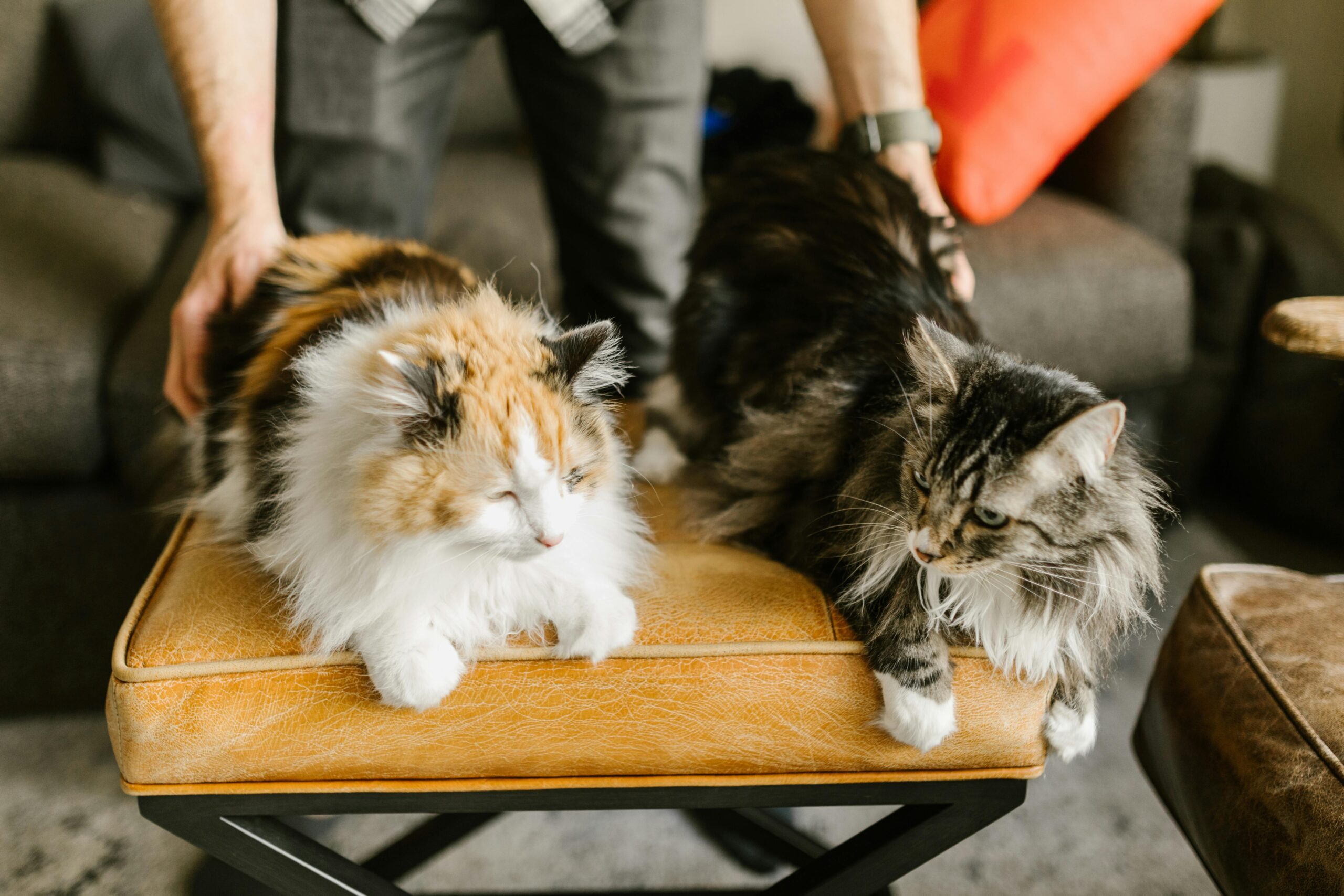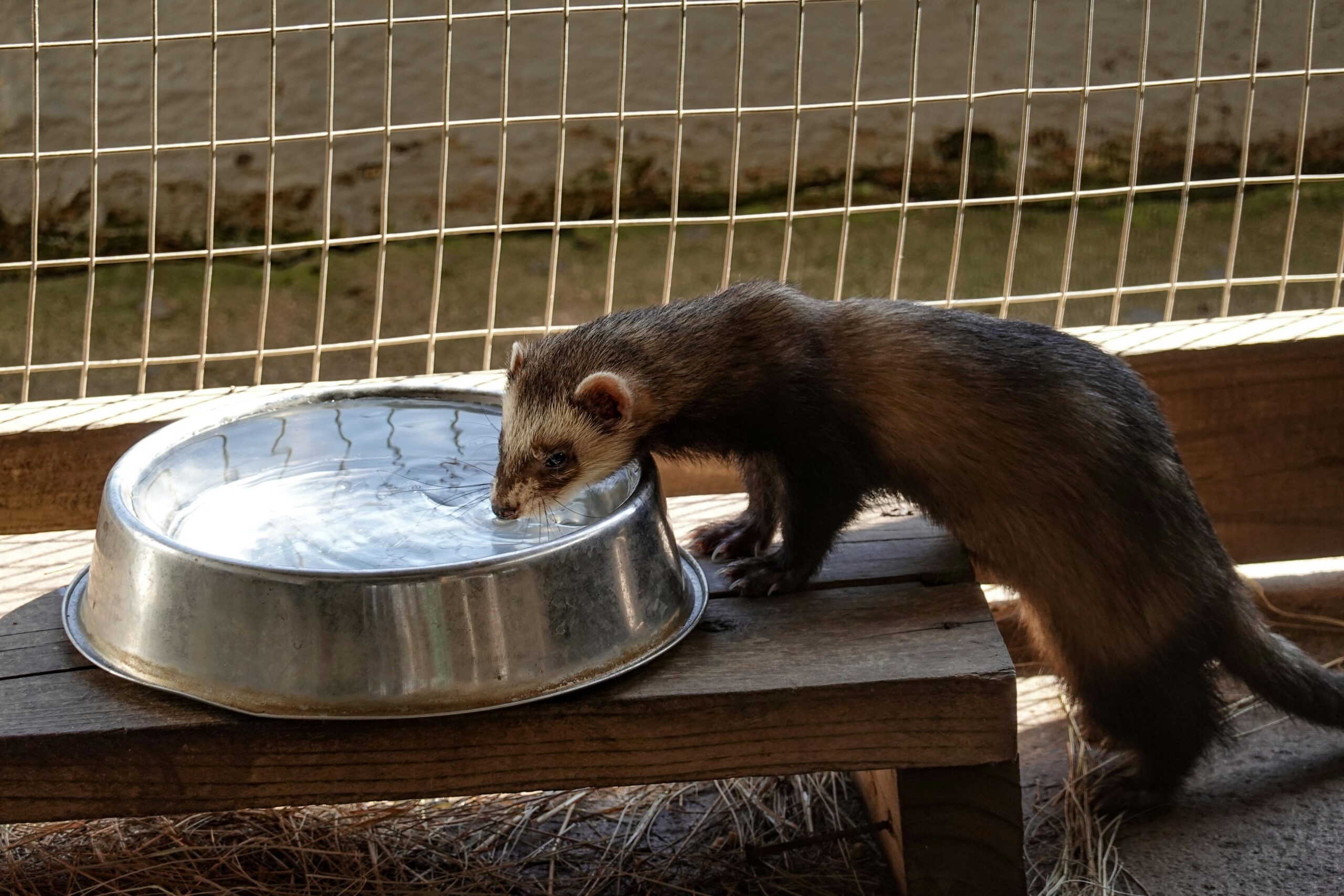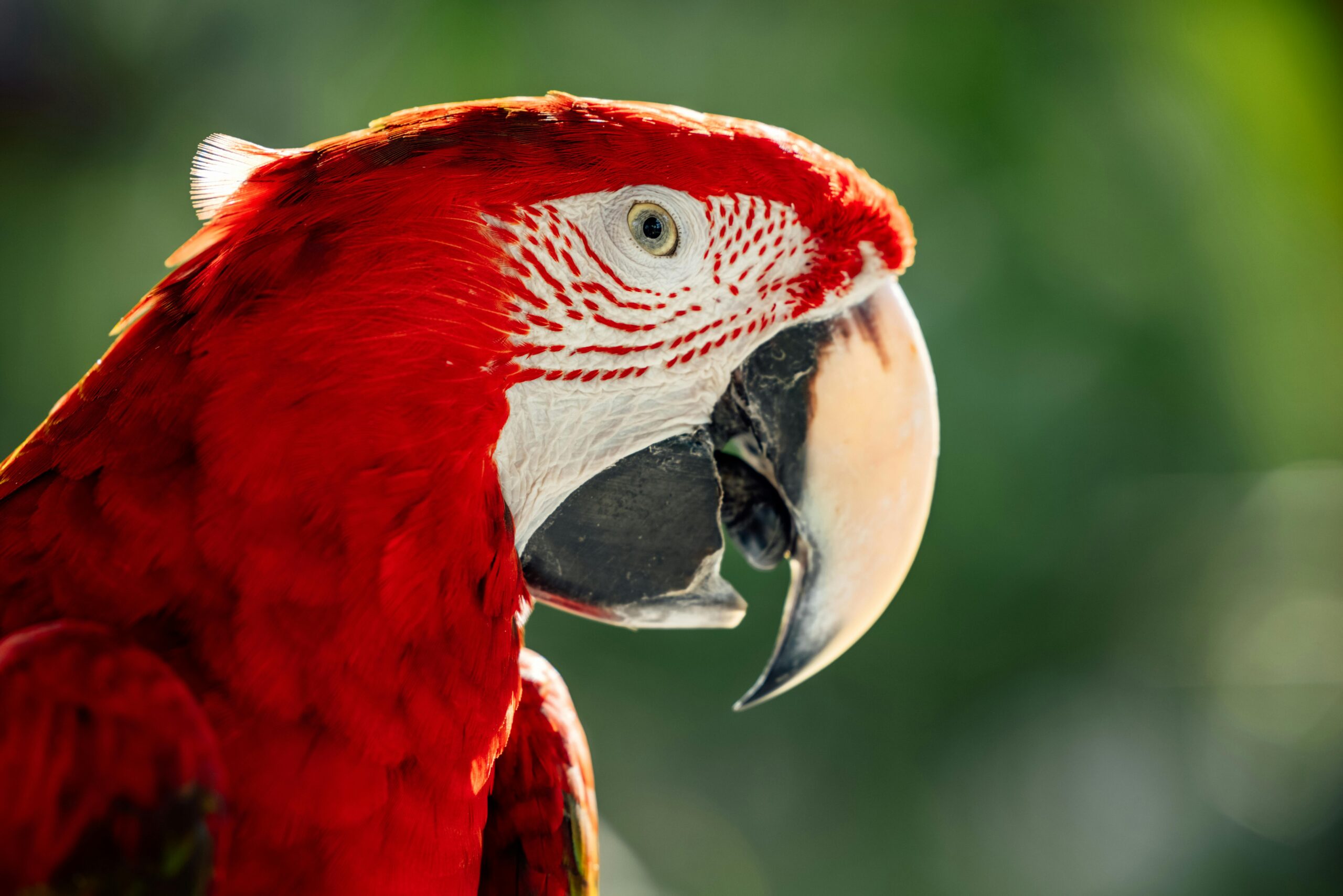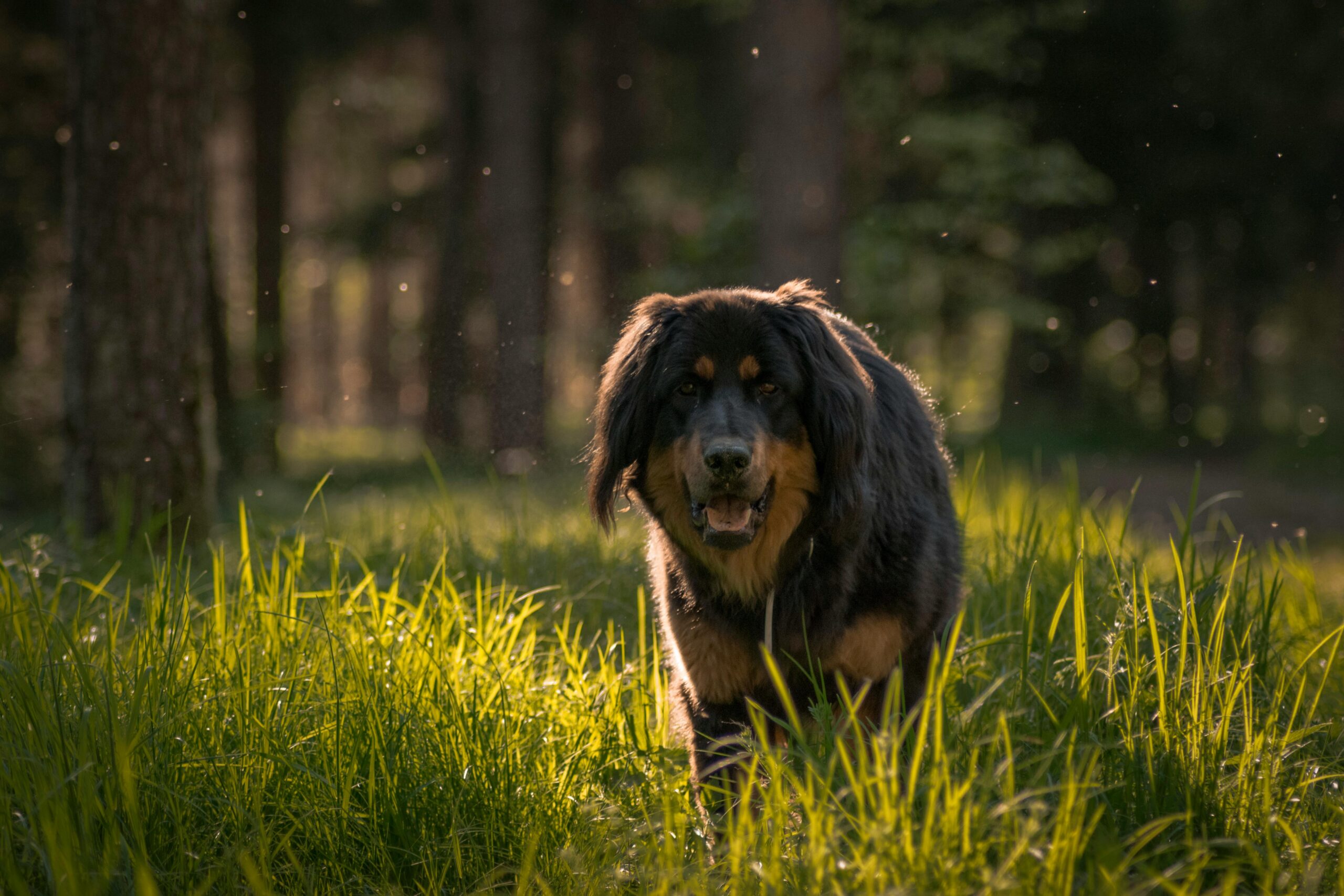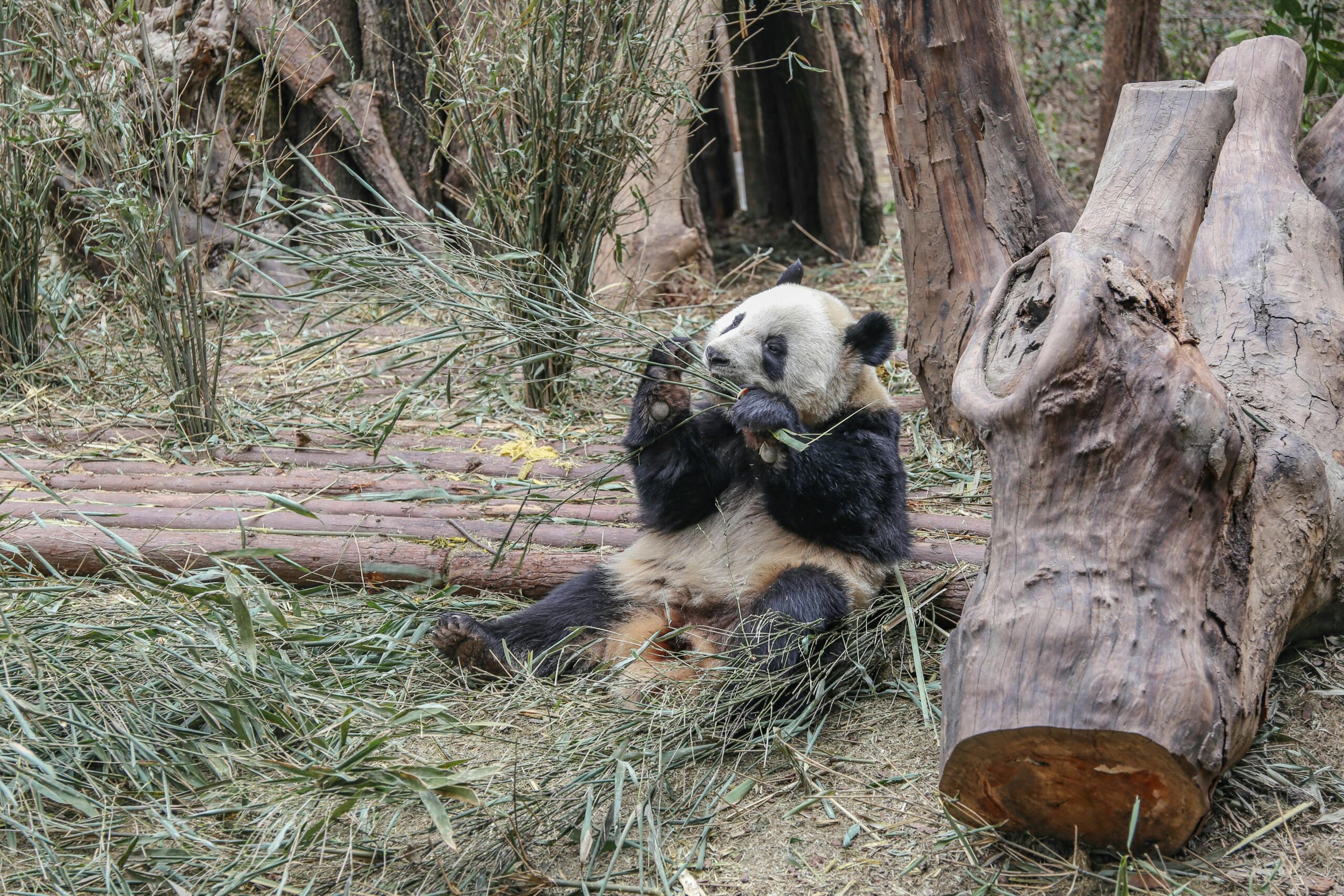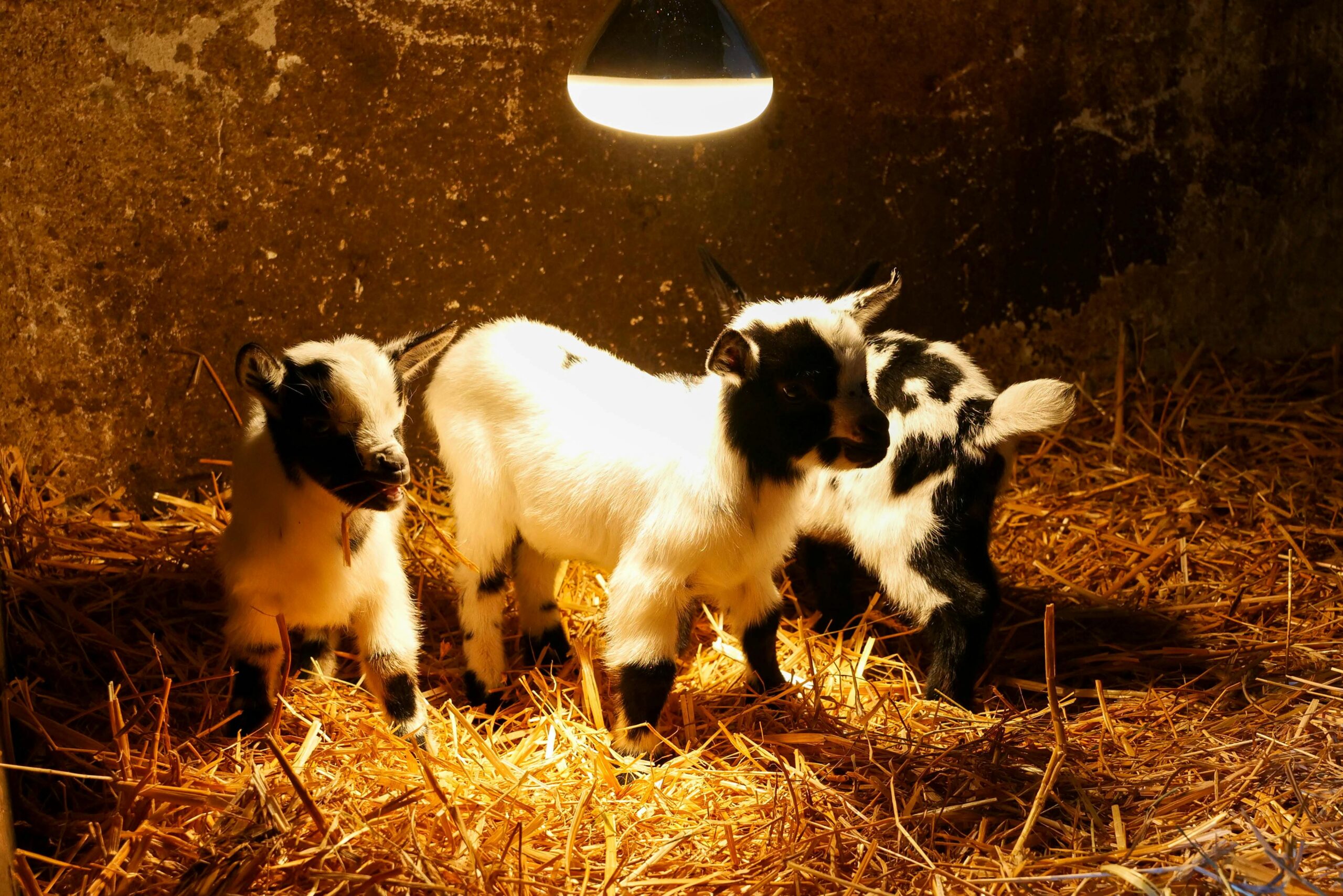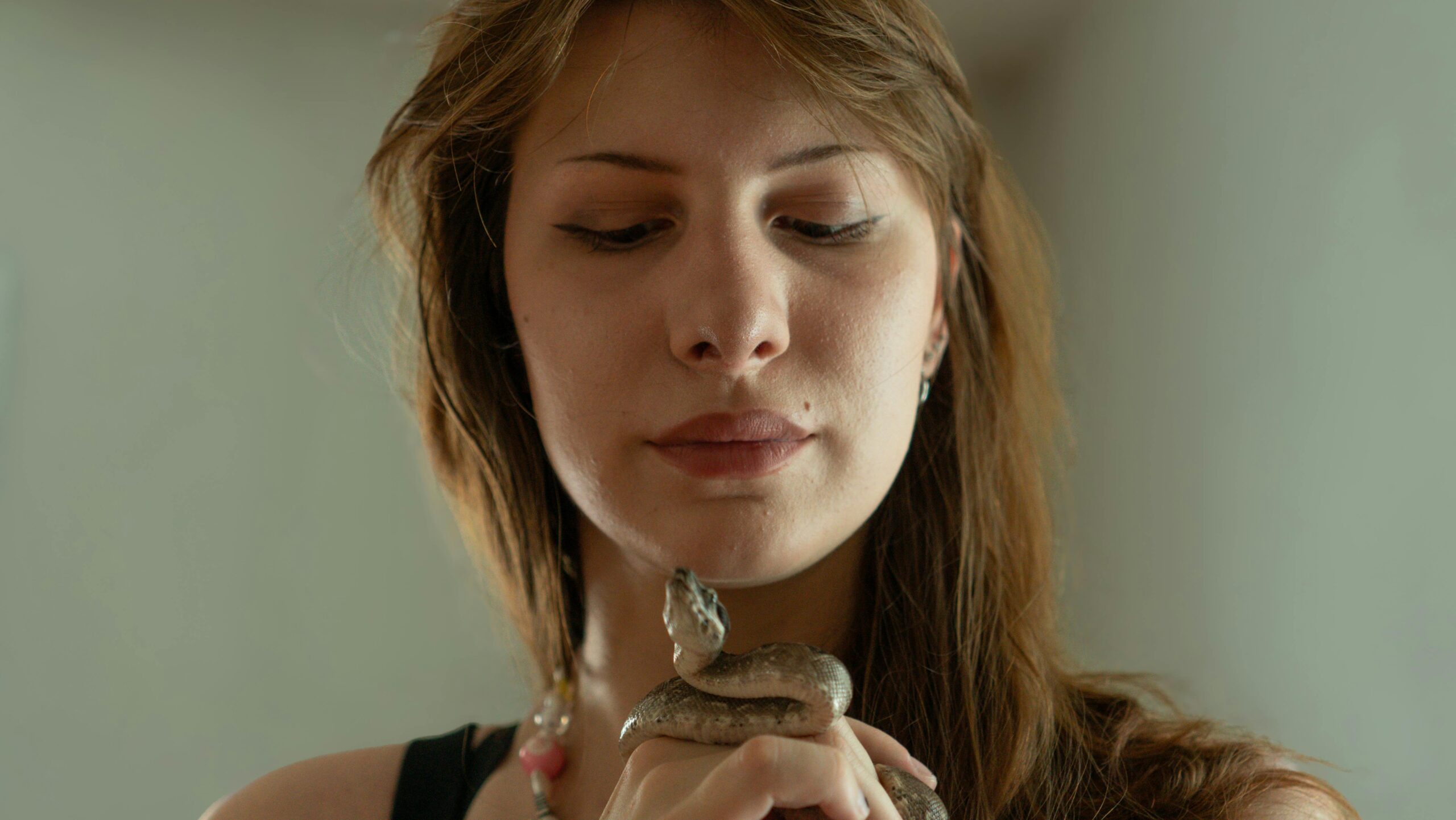Most popular Cat breeds have been cherished companions for humans for thousands of years, and over time, specific breeds have become more popular based on their temperament, physical characteristics, and adaptability to home environments. While individual preferences for cats vary, certain breeds consistently top the list due to their friendly nature, striking appearance, and unique traits. From elegant long-haired cats to playful, high-energy breeds, the diversity in cat breeds offers something for every cat lover. Below is an in-depth look at some of the most popular cat breeds, exploring what makes each one special. 1. Persian Cat The Persian cat is one of the most recognizable and beloved cat breeds worldwide. Known for its long, luxurious coat and distinctively flat face, the Persian exudes elegance and grace. Their gentle, laid-back demeanor makes them excellent companions for families, singles, and older adults alike. Physical Characteristics Personality Persians are known for their calm and docile personalities. They enjoy a quiet and peaceful environment, making them excellent lap cats. Though they are not as playful as some other breeds, they are incredibly affectionate and thrive on human companionship. They are not typically demanding and can entertain themselves when left alone, though they prefer the company of their favorite humans. Popularity The Persian is consistently one of the most popular cat breeds, thanks to its regal appearance and calm demeanor. The breed has been a favorite for decades, often featured in films, commercials, and even fashion campaigns. 2. Maine Coon The Maine Coon is the largest domesticated and most popular cat breed and is adored for its gentle giant nature. Known for their impressive size and tufted ears, Maine Coons are both striking in appearance and extremely affectionate, earning them a top spot in the hearts of cat lovers. Physical Characteristics Personality Maine Coons are known for their playful and affectionate nature. Despite their size, they are incredibly gentle and often referred to as “gentle giants.” They are social cats that enjoy interacting with their owners but are not overly demanding of attention. Maine Coons are also highly intelligent and can be trained to perform tricks or fetch toys, adding to their appeal as pets. Popularity Maine Coons have seen a surge in popularity in recent years, particularly due to their friendly, dog-like personalities. They are ideal for families with children or other pets, as they tend to get along well with everyone. Their impressive size and loving nature make them a popular choice for those looking for a unique and personable pet. 3. Siamese Cat The Siamese cat is one of the most recognizable and oldest cat breeds in the world. Known for their sleek, elegant appearance and striking blue eyes, Siamese cats are also famous for their vocal nature and strong personalities. Physical Characteristics Personality Siamese cats are known for their strong, outgoing personalities. They are extremely vocal and will often “talk” to their owners with a variety of meows, chirps, and other sounds. Siamese cats are very social and form strong bonds with their human companions. They are playful, intelligent, and often seek attention, making them excellent pets for those who enjoy an interactive and engaging cat. Popularity Siamese cats are popular for their intelligence, beauty, and affectionate nature. They are well-suited to people who are home frequently, as they crave attention and companionship. Their unique combination of looks and personality ensures they remain a favorite choice among cat enthusiasts. 4. Ragdoll Cat The Ragdoll cat is famous for its docile, affectionate temperament and striking blue eyes. Known for going limp when picked up (hence the name “Ragdoll”), these cats are perfect for people who want a loving and gentle companion. Physical Characteristics Personality Ragdolls are incredibly affectionate and often seek out human contact. They are known for being gentle, calm, and friendly, making them ideal companions for families with children. Despite their size, Ragdolls are not aggressive and rarely use their claws. They are playful but also enjoy lounging and snuggling with their owners. Popularity The Ragdoll’s combination of beauty and temperament has made it one of the most popular cat breeds in the world. They are especially favored by those looking for a lap cat that enjoys being held and pampered. 5. British Shorthair The British Shorthair is a robust, round-faced cat with a plush coat that exudes both strength and charm. Known for their calm and independent nature, British Shorthairs are perfect for those who want a less demanding but still affectionate pet. Physical Characteristics Personality British Shorthairs are known for their calm, easygoing personalities. They are independent cats that don’t require constant attention but are affectionate with their families. They are not as vocal or energetic as some other breeds, making them well-suited to quieter households. While they enjoy playtime, British Shorthairs are often content to relax and observe their surroundings. Popularity This breed has remained a favorite in the UK and around the world due to its charming appearance and laid-back nature. British Shorthairs are ideal for people who want a cat that can be left alone during the day but will still enjoy companionship in the evenings. 6. Bengal Cat The Bengal cat stands out for its exotic appearance, resembling a miniature leopard. With a stunning coat and energetic personality, the Bengal is a favorite among those looking for a more active and adventurous cat. Physical Characteristics Personality Bengals are highly energetic and playful. They love to climb, jump, and explore their environment, making them well-suited for homes with lots of space or access to outdoor areas. Bengals are intelligent cats and enjoy interactive play and puzzle toys. Despite their wild appearance, they are affectionate with their human companions and can be quite social. Popularity The Bengal’s exotic looks and playful personality have made it one of the most popular cat breeds, especially for those seeking a more active and engaging pet. However, they do require a lot of stimulation and may not be ideal for owners looking for a low-maintenance, relaxed cat. 7.
Which exotic species is most social?
Intriguing as they may be, exotic species is most social can also provide experiences that liftPetPeople.com residents above the typical companions, such as dogs, cats, or hamsters. Many people choosing exotic pets are looking for the unusual, but not all exotic species is most social make good choices for socialization. Some people might enjoy being by themselves, but others do well when in the presence of others. A study on the most social exotic pet requires consideration of diverse important issues, such as the pet’s background behaviors, its quick adaptability, its smarts, and its relationships with people. In the field of exotic pets, it is parrots, ferrets, sugar gliders, alongside a limited number of reptiles and small mammals that can develop affectionate and social connections with their keepers. We will go deeper into these pets to learn why they are referred to as the most sociable exotic animals. 1. Parrots Across the board, parrots are seen as among the most social and intelligent exotic pets that exist. Thanks to their solid wish for engagement and their knack for bringing closeness, they earn the status of a favorite for individuals who need a social companion. Intelligence along with Communication What has attracted interest is the remarkable intelligence of parrots, especially those including African Greys, Cockatoos, and Macaws. They are able to sound like humans, absorb skills, and competently solve problems. From their high level of intelligence, they are eager about mental activation alongside socialization. Owners need to interact with their parrot by engaging in discussions that educate, providing toys that enhance cognitive ability, as well as other means. An important reason for their sociability is their characteristic flock behavior. Naturally existing outside, they are strongly dependent on strong social networks. Proper care generally results in a view towards their human family members as their flock; they long to engage in family traditions. If parrots spend a long time without their owners, they typically become anxious. Emotional Bonds There’s a good reputation for parrots being affectionate to their people, as they usually huddle up with their owners, groom themselves on them, or frequently sit comfortably on them (behaviors usually observed among parrots). They additionally answer well to positive reinforcement training, which makes them enjoyable to connect with. However, this extent that exotic species is most social demand can also impose a challenge. Folks who are often away from home should avoid parrots because these animals can sink into depression or display behaviors like feather plucking if they sense a lack of attention. Thus, if you deem interacting with and socializing with your pet to be important, but you don’t have the time and energy needed, then a parrot may be the optimal choice for you. 2. Ferrets Virtually everybody knows that ferrets are an exotic pet, famous for being social and playful. A part of the weasel family, these small, dynamic mammals have been at home with people for more than 2,000 years. Playful Companions Ferrets are keen, misbehaving, and intensely playful, often characterised as having the vigor of a kitten. They handle engagement from their owners successfully and are able to learn tricks in addition to acing their ability to leash-walk. At home, ferrets like to investigate their surroundings and they need lots of play opportunities outside of their jail cells. The joyful nature of their play means they regularly will invite their owners to play by leaping about or hiding and seeking together. Social Structure By instinct, ferrets accomplish their best in settings that facilitate human and other ferret relationships. Many owners of ferrets, in fact, recommend that ferrets live with a minimum of two so they receive the social stimulation they need. Ferrets build tight bonds with their family members and quite often enjoy affection, loving to receive hugs and attention. Different from a lot of other pets, ferrets tend to live harmoniously with dogs and cats, especially when they start their lives together. Homes with multiple pets may appreciate that this adaptability makes them a good selection. Still, their sociability also requires that they receive company for long stretches. An inadequacy of partnership and mental stimulation might cause ferrets to behave adversely due to boredom. 3. Sugar Gliders Sugar gliders are little, nighttime marsupials that have become favored as unusual pets. Because of their status as aerial morphs and a feeling of community, sugar gliders are able to build reliable bonds with those who are in charge of their care. Strong Bonding Sugar gliders exist communally in close bonds for their life. Creatures usually form robust bonds with their stewards, frequently relating to them just as they would with a group of gliders. To this end, it’s important that owners invest a great deal of time with their sugar glider or consider having two so they can bond with each other. When socialization is effective, sugar gliders behave in a very affectionate manner, frequently snuggled against their owner’s shoulders or in their pockets. Training them to respond positively to their names or basic commands is made possible by their skill in identifying owners by scent. Nocturnal Companions Understand that sugar gliders live their best lives at night, thus their energy spikes take place in the evening. If the sugar glider is eager to play or wants to engage during the early morning, this could complicate things for a couple of the owners. For folks who work at night, this could mean nothing, as a sugar glider can help brighten their evenings as a cute and nearby companion. Because of their social characteristics, sugar gliders need considerable attention, just as ferrets will become either depressed or present behavioral complications if left alone for an extended period or neglected.
Is there any law regarding the ownership of exotic animals?
Rare pet adoption facilitates diverse and specialized experiences, but also introduces a number of legal challenges that are frequently complicated and can change significantly depending on your location. Animals commonly found in homes are not exotic pets, which include reptiles, birds, amphibians, along with some mammals, like primates and big cats. There is a variety of animals that can include small animals like sugar gliders and ferrets, along with large and maybe hazardous animals like tigers and venomous snakes. Many law regarding the ownership of exotic animals eye-catching for their distinctiveness and the difficulty inherent in their care, yet knowledge of the relevant legal aspects is important before making a decision. This incorporates federal as well as state laws, together with permits, restrictions, and animal welfare regulations at the local scale. The inability to comply with the conditions laid out in these laws may trigger serious outcomes, including taking the animal or, in select cases, the initiation of criminal charges. This is an extensive examination of the legal issues that future exotic pet owners need to think about. 1. The Laws of the United States Related to Exotic Animals A number of federal laws law regarding the ownership of exotic animals oversee the ownership of exotic animals in the U.S. Although all laws may not apply to all exotic animals, a wealth of them is designed to confirm the security of both public safety and animal welfare. The principal goal of these statutes is to stop animal abuse and to deal with the risks presented by the care of potentially dangerous animals. The Act pertaining to Endangered Species (ESA) The Endangered Species Act (ESA) is amongst the most important federal laws related to exotic pet ownership. The aim of the ESA, designed in 1973, is to protect species in danger of becoming extinct. Any operations that include importing, exporting, selling, or transporting animals labeled as endangered or threatened are forbidden by the ESA unless permission is granted in writing. Many unusual animals, for example, several species of parrots, big cats, primates, and reptiles, are on the Endangered Species Act list, which greatly limits ownership. Your first step should be to know whether the animal is protected by the ESA, as well as if permits are obtainable for private ownership. A permit does not mean there are no strict regulations; it includes precise demands for animal housing, care, and transportation. The Lacey Act From 1900, the Lacey Act is an important federal law regarding the ownership of exotic animals that greatly affects the ownership of exotic pets. The statute crafted by lawmakers targets wildlife trafficking by illegalizing the import, export, sale, acquisition, or purchase of animals taken without authorization from federal, state, or international specifications. By the Lacey Act, it is allowable to limit or totally bar the importation and movement of certain exotic animals from one state to another. This law is especially important for species which have protection in their country of origin but are after all in the exotic pet trade. A Lacey Act violation may bring about major fines and the chance of imprisonment. The Animal Welfare Act (AWA) Governing the treatment of animals in research, exhibition, transport, and by dealers is the Animal Welfare Act (AWA). Data from the AWA, which mainly talks about zoological institutes, animal testing firms, and pet buyers, point to a minimal effect on private possession of exotic animals. As an illustration, if you get an exotic pet from a breeder or dealer, they must follow the AWA’s rules about decent treatment, adequate accommodations, and veterinary services. Items included in the AWA, such as parrots and large reptiles, are also affected by ownership considerations in exhibitions. If you plan to present or perform with your exotic pet, you might need additional licensing along with inspections because of the AWA. The Convention on International Trade in Endangered Species of Wild Flora and Fauna (CITES) Even though it is not a domestic law, CITES is an international understanding that oversees trade in endangered species across international lines. Since the United States is a member of CITES, import and export of exotic animals on this agreement list are all under close regulation. The classifications used by CITES for animals are three appendices, indicating the degree of protection each requires. Appended I list species that are facing extinction, and usually trading of these animals is outlawed, unless for the purposes of scientific research. Appendix II describes species that may become at risk if unregulated trade continues. The species in Appendix III are V protected in at least one country*** that has requested aid from CITES parties in controlling trade. Make sure that your unusual foreign pet is listed in CITES and has the necessary permits before the import. Not correctly authorizing the importation of a CITES-listed species may result in serious fines, the seizure of the animal, along with legal consequences. 2. Exotic Animal Laws at the State and Local Levels You may not be able to lawfully possess an exotic pet because regulations from state and local governments are critical. In particular cases, these rules might be more demanding than federal guidelines, and they commonly change from one locality to another. To acquire an exotic animal, documentation of the pertinent laws in
What represents the most sociable exotic pet?
People looking for pets that are more extraordinary than everyday pets such as dogs, cats, and hamsters are finding most sociable exotic pets appealling due to their rare and singular behavioral traits. Here, we have pets that represent a variety of species such as birds, reptiles, amphibians, and mammals that are unconventional household pets. Even so, while the attraction to an exotic animal is powerful, not all of them are adequately suited for close, social interaction with people. Certain species are almost entirely solitary, while still others manage to develop powerful relationships with their owners and thrive in community situations. Knowing what defines an animal as “social” in terms of pet ownership is important. A social pet primarily is looking for engagement, enjoys being touched, and develops a relationship with its human family member. A range of animals tends to long for intellectual stimulation and social relationships, whether with others of their species or with their human carers. Some exotic pets qualify for this category, but their degree of social acceptance changes from species to species. This expansive review will appraise several sociable pets, paying regard to their basic behaviors, their flexibility in relation to the people around them, their intelligence, and their talent at forging emotional ties. Standing out among exotic pets with a social bent are parrots, ferrets, sugar gliders, and particular mammals including rats, providing individualized forms of social interaction with their human owners. 1. Parrots Parrots are always among the first most sociable exotic pet listed. Typically valorized for their cleverness, skill in making human sounds, and strong social tendencies, parrots are usually thought of as one of the most interactive exotic animals. The African Grey Parrots, Cockatoos, and Macaws are very comparable for their human companionship skills. Intelligence, together with Communication The remarkable intelligence of parrots is one reason they are especially most sociable exotic pet. The birds illustrate an outstanding ability to learn sounds and copy them, which includes human speech as well. Famous for their language abilities and smarts are the African Grey Parrots. Parrots do more than cite common phrases; they tend to place those words within context, demonstrating some degree of understanding. An enlarged communication talent enhances the owners’ social interactions with people, supporting conversation, teaching, and brain stimulation for the bird. Emotional Bonds Wild parrots create social populations that suggest power is present in their affiliations. Within a familiar setting, this requirement for companionship usually converts to the people who care for them. Parrots cherish love, spend a lot of time caring for their owners, lean towards affection, and reflect their behaviors. Out of the many parrots available, cockatoos often grow extremely co-dependent on a single person and can feel jealous during interactions their owner has with additional individuals. Producing rewards is possible with this connection, although significant interaction and attention are necessary for the parrots to feel satisfied. Social Challenges The combination of their intelligence with a social nature means that parrots are the ideal pets for those able to give them regular attention; however, loneliness for an extended time can leave them either unengaged or sad. The experience of discomfort may cause problems with parrots, including unbroken screaming or removed feathers. As a result, they are tailored for people or families able to repeatedly engage and provide mental stimulation. 2. Ferrets The ferret ranks as an additional prominently social exotic pet. Erinaceidae is the family of these small mammals that have undergone thousands of years of domestication. Fans of exotic critters think these animals are alive, focused, and quite interactive, leading them to be their leading choices. Playfulness and Curiosity Ferrets are famous for their overall energetic nature and playful characteristics. They prefer to incorporate interacting with toys and joining in on games with friends when thinking about their surroundings. Ferret owners frequently find the need to “ferret proof” their homes because ferrets are skilful at finding tiny holes to squeeze through or things to hide. Their passion for discovery makes them rather interesting species that are perpetually searching for new stimuli. Strong Social Bonds Social animals that flourish together in groups are known as ferrets. They succeed in wilderness communities, which translates into a need for companionship in their households. The commonly made suggestion is to house ferrets in pairs or small groups, since they will have to deal with struggle, chase, and participate in other social behaviors together. Much like their human companions, ferrets create solid relationships and, luckily, take joy in being held, hugged, and playing. Interaction with Other Pets How ferrets interact with other animals is key to their behavior; this happens most smoothly when they come together early in life. Thanks to their flexibility for many settings, they present a rational solution for households with numerous pets. Yet, homes with small prey animals are not appropriate for them, because their hunting instincts may engage. 3. Sugar Gliders Due to their striking visual appearance and social interactions, sugar gliders, little marsupials from Australia, are becoming more popular. Night creatures form a robust connection with those caring for them when correctly socialized and dealt with at a young age. Bonding and Attachment There is a powerful social relationship linking sugar gliders to their keepers. They happen in groups in their natural setting, and their life strongly depends on solid social connections. As pets, these beings pass on to their human caregivers their essential need for companionship. When well looked after and loved, sugar gliders can evolve into incredibly loving companions, usually sliding around their holders or snuggling into their pockets. One special method we use to bond with sugar gliders is the application of bonding pouches. These are little cloth pouches that the gliders can tuck into while attached to the owner’s neck or chest. Getting close to sugar gliders helps them like the scent and sounds of their owner, and this leads to a boost in their affection. Nocturnal Nature Owning a sugar glider means you should keep in mind that they are
What are the 3 most expensive pet?
Due to their individual traits, prestigious backgrounds, and impressive looks, exotic pets almost always cost a great deal. Even though a lot of most expensive pet are exotic animals are cheap, others can charge hundreds of thousands or even millions of dollars. Such costly animals require either rare pets that need specialized attention and elaborate habitats, or in certain instances they require a lot of legal paperwork and insurance. People with sufficient financial resources to pay for the initial investment and the ongoing fees of their care consider the opportunity to have a rare, expensive pet incredibly attractive. This thorough analysis will examine the highest costing exotic pets, investigating why they are so expensive, the problems and gratifications linked to their ownership, and the ethical and legal obstacles intimately related to the care of such uncommon animals. A group of particularly valued exotic animals consist of the Tibetan Mastiff, Savannah Cat, Palm Cockatoo, Hyacinth Macaw, and white lions, all of which create specific experiences for their owners. 1. Between $150,000 and $2 million is the asking price for a Tibetan Mastiff. With certain purebred specimens bringing in more than $2 million , the Tibetan Mastiff holds the name as one of the most expensive pet worldwide. As defense against wolves and leopards, the nomadic peoples of Tibet, China, Nepal, and India have historically used the Tibetan Mastiff, which is a large and powerful breed that for some time has symbolized wealth and social position in Asia. Rarity and Pedigree By and most expensive pet, the main cause of the astronomical price of Tibetan Mastiffs is their rarity, along with the hefty breeding standards that influence the most costly specimens. Tibetan Mastiffs with pure breeding, and especially those bearing desirable bloodlines, are exceptionally rare. In the early 2010s, these dogs turned into a status symbol in China, where rich people pursued the most pure examples. The 2011 record for the most expensive dog worldwide went to Big Splash, a Tibetan Mastiff that sold for $1.9 million. Appearance and Personality Reaching over 150 pounds in weight, Tibetan Mastiffs are great big dogs that have a thick coat which causes them to resemble lions. They characterize themselves as independent, intelligent, and alert, because these qualities fit with their large physique. Their devotion to family makes them infamous for their distance from strangers, which in turn makes them first-rate watchdogs. Maintenance and Care Costs Although the buying price of a Tibetan Mastiff is incredibly high at first, upkeep for these animals is also financially demanding. A large size alongside a thick coat implies a big demand for food and continued care. Also, they demand an appropriate amount of space to discover, making them better adapted for remote settings. Expensive health care is a possibility, because they are likely to experience certain genetic conditions, such as hip dysplasia. 2. The cost for Savannah Cat is somewhere between $10,000 and $50,000. Prices for an F1 generation (first-generation hybrid) of the Savannah Cat are from $10,000 to $50,000 and upwards. The combination of a serval and a domestic cat results in this breed that, primarily by emphasizing its large ears and striking features, illustrates the body size of a medium-sized wild African cat. Hybrid Rarity Thanks to the breeding difficulties involved, Savannah Cats are prohibitively expensive. For generating a first-generation hybrid, it’s necessary to execute a crossing between servals and domestic cats; this important task requires careful analysis, as well as expert guidance. The further removed the Savannah is from its serval ancestry, the greater its affordability, however, the price of the first generation of cats is high indeed. The physical features and behavioral traits of their wild ancestors make F1 Savannah Cats a favorite of those who are enthusiastic about exotic pets. Appearance and Behavior Savannah Cats have a reputation for their high, sleek bodies, large ears, and characteristic spotted coat. They echo mini cheetahs in their motions, reflecting excellent coordination and often jump and climb. Thanks to their high intelligence, these cats can learn to walk on a leash or participate in fetch—activities that set them apart from a lot of other cat breeds. They inherit a spectrum of the wild qualities from their serval ancestors, including an intense urge to hunt and an extensive supply of energy. Special Care Requirements Having a Savannah Cat, particularly an F1, involves making a promise to their care. For cats to stay stimulated and happily cognitively engaged, it is important to provide an ample amount of room to avoid boredom causing unwanted behaviors. The preferences in diet of wild cats reveal the critical need for both protein and raw food in their diet. Anyone planning to own a hybrid cat must be informed about the changing hybrid cat ownership regulations that differ from state to state. 3. $15,000 to $40,000 is the price of a Hyacinth Macaw. The name “gentle giant” applies to the Hyacinth Macaw, one of the biggest and most high-priced parrots on earth. This unique bird, indigenous to central and eastern South America, declares itself through its extraordinarily vivid cobalt-blue plumage and yellow highlights by its beak and eyes. Rarity and Endangerment The main reason for Hyacinth Macaws‘ high price is their rarity. On the list of vulnerable species, they are losing population because of habitat loss and the illegal pet trade. The limited number pushes the price for captive-bred individuals, with responsible, lawfully sourced animals valued between $15,000 and $40,000. Social Nature and Intelligence Hyacinth Macaws are very gregarious and warmhearted creatures. Well known for their loyalty to their caretakers, they need a foreseeable level of engagement and brain exercise to be cheerful. Being both smart and able to imitate spoken language, these birds can perform tricks and handle problems too. Being known for their remarkable intelligence, these birds quickly become restless and might exhibit behavior like feather plucking or overly loud vocalizations if they don’t receive your attention. Care and Maintenance The care of Hyacinth Macaws is specialized. Due to their generous
What advantages and disadvantages buying an exotic pet?
People in search of advantages and disadvantages buying an exotic pet an exciting companionship alternative to traditional pets, such as cats, dogs, or hamsters, may want to consider having an exotic pet. The range of exotic pets includes birds, reptiles, wild animals such as big cats and primates, along with strange small mammals like sugar gliders or fennec foxes. The serious consideration necessary for owning an exotic animal is considerable. Along with this, there are other responsibilities, challenges, and results. During this thorough discussion, we will analyze the benefits and limits of owning exotic pets. This will back potential business owners in their decisional process by comparing the benefits, such as personal enrichment and innovation, to the negatives, which include demanding care requirements, legal concerns, and moral struggles. Pros of Owning an Exotic Pet 1. Interesting and Fascinating Partnership The principal attraction of owning an exotic pet is the available potential to maintain a rare and special animal as a companion. Both common animals, such as parrots and iguanas, and more unusual selections like servals or sugar gliders, deliver an experience that is very far from typical. What makes them so interesting to their owners and frequently to others is their rarity and difference. Aesthetics and Novelty: Other pets usually have remarkable physical appearance with a range of color, pattern, or design. Birds such as macaws or reptiles including chameleons feature stunning shades that might turn them into the focal point for any house. A lot of people like the unusual nature of having an animal that few people keep. Unique Behavioral Traits: Animals considered exotic tend to act in ways uncharacteristic of conventional pets. Similar to human speech, parrots represent it, however, bearded dragons exhibit astonishing bodily actions, including the movements of head bobbing and waving. 2. Educational Experience Those students who have an exotic pet have the opportunity to analyze animal behavior, animal biology, and conservation of our ecosystem. People who own these pets usually discover that they must provide niche care, which motivates them to study the animal’s original habitat, food, and character. Learning about Ecology: An influx of animals considered exotic, from reptiles to birds and amphibians, have specific environmental requirements in addition to nutritional demands. Owning one generally helps enhance understanding of the ecological systems they derive from. Understanding the ecological needs of a pet turtle involves its habitat as well as what it eats, which connects to the wetlands it living in and creates further ecological implications moving forward. Caring for Unique Creatures: Animals regarded as exotic, for example sugar gliders or hedgehogs, call for specialized knowledge in their health, dietary needs, and the enhancement of their environment. The distinctive attention to pets frequently increases a person’s interest in zoology, veterinary medicine and conservation. 3. Creating Relationships with Out of the Ordinary Animals Some people might regard advantages and disadvantages buying an exotic pet exotic pets as being less loving than conventional pets, yet a lot of pet owners create strong relationships with their exotic friends. Many members of the parrot family are quite social and can build durable, long-lasting relationships with their human carers. By the time they are young, socialization creates emotional bonds for ferrets and sugar gliders with their human companions. Affection and Social Interaction: Around the world, birds that exhibit both sociability and intelligence, such as cockatoos and parrots, are generally recognized. Thanks to their ability to preen their companions and search for love intentionally, these animals can demonstrate affection. Playfulness and Engagement: Ferrets and Savannah cats are exotic pets discovered to really love playful activities and value the opportunity to spend quality time with their owners. Animals of this type can learn tricks, can take part in games, or just love to cuddle. 4. Personal Fulfillment as a Status Symbol For a number of people, keeping an exotic pet is personally rewarding. Often, the symbolism evokes work achieved, unparalleled characteristics, or wealth; this is always the case with breeds like Tibetan Mastiffs that can go for hundreds of thousands of dollars at auction. Prestige and Uniqueness: Dedicated to distinctiveness, a lot of people regard exotic pets as symbols of status. Moneyed people could strive for valuable animals, such as rare parrots, in addition to popular choices like white lions and cats that are not common, including servals and caracals. Taking responsibility for this pet can inspire chats that demonstrate ownership of success or wealth. Emotional Satisfaction: Fancy for animals leads to great happiness among those who look after exotic pets. Building a relationship with a rare animal, along with a joy in meeting its elaborate care demands, offers a substantial rewarding feeling. 5. Foreseeable Conservation Methods A portion of those individuals who prefer to own exotic pets does so with the goal of supporting conservation efforts. The combination of smart ownership with specific breeding of certain species has the potential to help animals threatened in their natural habitats. Breeding Programs: Rare species, maintained in managed environments by ethical breeders, may assist in efforts toward conservation. A few owners contribute to breeding programs intended to boost the numbers of endangered species, including specific reptiles or exotic birds. Cons of Owning an Exotic Pet 1. Difficult and High-Cost Care Requirements An important negative point associated with having an exotic pet is the tough and expensive demands for care. The needs that are specific include diet, habitat, and the overarching health of a collection of exotic animals. Dietary Needs: Several exotic pet types have dietary needs that are hard to reproduce in captive environments, either due to expense or difficulty. Finding and supervising the important live insects or rodents for bearded dragons and a variety of snake species can be quite challenging. To maintain their health, generally parrots need a variety of fruits, vegetables, seeds, and nuts. Housing Requirements: The usual requirements for exotic pets include elaborate habitats meant to imitate their natural environments. One aspect of this is developing temperature-regulated terrariums for reptiles, primary aviaries for birds, or extensive outdoor
What kind of diet should I give to my exotic animal?
Much of the kind of diet should I give to my exotic animal like maintenance of an exotic pet’s health, longevity, and well-being depends on its feeding practices. differential to typical pets, exotic animals usually have particular nutritional necessities that relate closely to their natural home and evolutionary features. The provision of these dietary needs is important, since inadequate consumption could result in both health difficulties and malnutrition and potentially shorten life expectancy. Since exotic pets cover a spectrum ranging from reptiles to birds, small mammals, and primates, it’s important to appreciate the special nutritional requirements of each species. This extensive guide will take an in-depth look at the many types of exotic pets while furnishing information on their specific diet needs, the best ways to feed them, and important factors for maintaining a well-rounded and nutritious meal schedule. 1. Birds Finches, cockatoos, parrots, and macaws are a number of the favored exotic bird breeds. In order to maintain health, produce superior feathers, and preserve general strength, all bird species need certain considerations in their diet. A poor diet sensitizes birds, and a bad feeding method may rapidly cause health problems including malnutrition, obesity, and liver disease. General Diet for Exotic Birds: Pellets: A good-quality pellet diet is regularly suggested as the basis for a bird’s dietary needs. Pellets are developed to offer a balanced assortment of vital nutrients, vitamins, and minerals. Specialized businesses in bird-fe marketing adopt formulations designed specifically for different avian species. Fresh Fruits and Vegetables: A diet for birds ought to include a substantial amount of fresh produce. Actually, parrots can do well on a range of fruit, which comprises apples, oranges, berries, and melons. Carrots, peas, peppers, and leafy greens are just as important as well. These are providing us with natural supplies of vitamins, minerals, and fiber. Seeds and Nuts: Kinds of seeds and nuts are typically a natural diet component for various birds, but consumption should happen moderately because they can quite high in fat. Eating only seeds can lead to ineffectiveness and create nutritional deficiencies. Occasional treats of nuts, such as almonds and walnuts, are fine, but you should make an effort to balance them out. Protein Sources: Chances are that birds could benefit from cooked eggs, beans, or legumes for protein. Parrots benefit from a protein source in their breeding season and also during their periods of growth. Species-Specific Considerations: Parrots and Cockatoos: These intelligent birds need ample fruits and vegetables along with a small amount of nuts for their nutrition. African grey parrots need the calcium from leafy greens to help lessen hypocalcemia. Finches and Canaries: These smaller avian species can flourish, attributable mainly to their plentiful seed diet; nonetheless, they need vegetables and pellets for complete nourishment. Foods to Avoid for Birds: Birds are unable to handle avocado, chocolate, caffeine, and alcohol, and they should never form part of their diet. Avoiding foods that are processed or salty can help you avoid health problems. 2. Reptiles Covering snakes, lizards, tortoises, and turtles, reptiles showcase a range of food selection options. Figuring out their food choices in the wild greatly informs the design of a diet that adequately addresses their individual nutritional demands. General Diet for Reptiles: Insects and Invertebrates: Successful maintenance of bearded dragons, geckos, and chameleons, as well as other reptiles that consume insects, relies on live insects such as crickets, mealworms, and waxworms and roaches. A coating of calcium and vitamin supplements is important to avoid deficiencies for these insects. Rodents: Pythons and boas, along with other constrictors, are lizards that mostly feed on mice and rats. How big the snake is affects its intake, including everything from little pinky mice to big rats. Prey must be adequately proportioned, generally not wider than the widest aspect of the snake’s body. Fruits and Vegetables: For herbivores, iguanas and tortoises, it’s important to have diets with plenty of vegetables, leafy greens, along with a little fruit. The choices of dark, leafy greens, such as collards, mustard greens, and dandelion greens, are outstanding. Squash, zucchini and bell peppers are just a few vegetables that can make the cut. Fruits that include berries and melons can be presented as occasionally available treats. Prepared Diets: Species of reptiles, for example turtles and tortoises, benefit greatly from special diets available at pet shops. The design of these pellets is to deliver balanced nutrition, but fresh produce should be added for supplementation. Species-Specific Considerations: Bearded Dragons: These lizards succeed as omnivores by relying on a range of insects (crickets and mealworms) combined with different vegetables (collard greens and squash). Unlike grown dragons, dragon offspring in their early years do well with a bountiful amount of insects to eat rather than moving towards a plant-based diet. Snakes: Snakes are, generally speaking, meat eaters and feed on rodents. It’s vital to serve prey that is the right size and to avoid overfeeding, since obesity is a standard problem for snakes kept in captivity. For safety reasons, rodents that are kept frozen-thawed are frequently chosen over live prey. Foods to Avoid for Reptiles: Avoiding nutritional content, iceberg lettuce and spinach can also bind calcium, creating deficiencies. The acid content found in citrus fruits makes them usually too powerful for reptiles. 3. Small Exotic Mammals Unique dietary needs characterize small exotic mammals—like ferrets, hedgehogs, sugar gliders, and fennec foxes—which are very unlike the dietary requirements of typical small pets, including hamsters and guinea pigs. General Diet for Small Exotic Mammals: Ferrets: Being obligate carnivores, ferrets must consumption of a diet marked by animal protein. Highly regarded ferret food from commercial sources, or a raw diet including meat, bones, and organs, can give the required nutrients.
Can having exotic pets be safe for children?
Different considerations come into play when one is assessing the safety of exotic pets be safe for children. Even though unusual animals may look lovely and are rare friends, they generally come with care specifications and behavioral nuances that not all families can handle, particularly families with younger kids. This article will assess different important aspects touching on the safety of exotic pets in homes with children, by examining several relevant topics including the characteristics and risks associated with different exotic pet types, and essential considerations that families need to address. Understanding Exotic Pets Exotic pets are believed to be animals other than traditionally kept pets, for example, cats and dogs. You can expect to find a wide diversity of animals in this category, including reptiles—such as snakes and lizards—birds—including parrots and cockatiels—small mammals, like ferrets, sugar gliders, and hedgehogs—and amphibians, which include frogs and salamanders. All of these animals carry unique requirements, personal attributes, and threats that concern their management and interactions with human beings. Factors to Consider 1. Temperament and Behavior exotic pets be safe for children when they understand how exotic pets behave. A few exotic pets act more at ease and accepting, whereas others may become unruly or downright aggressive. Here are some examples: Reptiles: Many reptiles including snakes and lizards do not usually behave aggressively, although they can nevertheless bite when they sense fear. A lack of understanding among children about how to manage them correctly raises the likelihood of injury. Birds: The fact that parrots and cockatiels tend to offer affection means little if their tough beaks end up hurting them due to stress or a feeling of restriction. Small Mammals: Despite being interesting and wonderful friends, guinea pigs and ferrets might bite if they smell impending fear or perceive danger. Children in their early years are unlikely to know that an animal is feeling stressed. Thoroughly knowing the behavioral nuances of an exotic pet is important for providing safe experiences for children around the pet. When there are children under the age of awareness in a household, a jittery or quickly startled exotic pet may not work well. 2. Potential Health Risks Diseases carried by exotic pets may possibly endanger the health of children. Some examples include: Salmonella: The risk of Salmonella transmission to humans exists due to direct contact or through contaminated spaces, as a result of reptiles, especially turtles, snakes, and lizards. While they are still under development, children have greater chances of infections linked to their fragile immune responses. Parasites: Not following correct hygiene practices can result in humans catching parasites from pets of exotic origin. As an example, rodent pets can harbor parasites including mites and fleas. Zoonotic Diseases: Some unique pets have the potential to carry diseases that can spread both from animals to humans. Species of birds, including some, have the ability to communicate psittacosis, a respiratory infection that can be serious for humans. Understanding acceptable hygiene in caring for and being with pets is essential for children, to alleviate health risks. Reaching these goals involves a total hand washing technique and abstaining from touching your face after pet interactions, as well as routine vet visits for your animals. 3. Allergies and Sensitivities Some children may be allergic or have sensitivities to distinctive animal breeds, including exotic pets. In certain people, sensitive to allergies, guinea pigs and rabbits can cause reactions. It makes sense to observe how family members interact with an exotic pet prior to bringing one home, so any allergies can be avoided. 4. Supervision and Interaction Having supervision is important when kids engage with exotic pets. Because they are young, children face challenges in understanding animal care and in spotting signs of distress. Consequently, adults need to constantly oversee interactions of children with exotic pets. Children are more likely to have a successful and safe relationship with pets when directed in proper engagement methods. Here are some tips for safe interactions: Gentle Handling: Tell kids to grasp pets lightly and to keep their distance from dramatic maneuvers that could frighten the animal. Respecting Space: Help children to better understand and respect the animal’s space, along with its signs that it would like privacy. Safe Zones: Establish facilities for pets to be safe when they feel that the stimuli they are experiencing is too much. This is able to calm anxiety in animals and stop the danger of aggressive behaviors. Educational Activities: Engage children in educational jobs that affect the care of the pet as well as its environment. This facilitates insight and honors the actual requirements of the animal. 5. Choosing the Right Exotic Pet Picking out the correct exotic pet is important for families that have kids. All exotically-sourced pets aren’t fit for families with children, and a handful could demand more unique care than others. Here are some general guidelines for selecting exotic pets for households with children: Age Appropriateness: Some rare pets are preferable for older children who grasp their requirements and are responsible in their care. Children under a certain age will probably do well with pets that are distinguished by calmness and simplicity of maintenance. Species Suitability: Explore the temperament along with the care needs of several exotic species. Many people tend to see leopard geckos as quite calm when comparing them to snakes that present larger handling struggles. Socialization Needs: Some exquisite domestic pets really like social attention and contact, whereas others could favor being alone. If your family is interested in a social animal, you should consider pets known for their affability. Consult Experts: Take counsel from veterinarians or exotic pet professionals when you’re thinking about bringing an exotic pet into your family. They can deliver knowledge about the species that are most appropriate for the enjoyment of children and families. 6. Legal Considerations Examine any laws that might affect you before you opt to introduce an exotic pet into your home. Checking that any exotic animal you wish to buy is legal within the state
In which manner can I locate a vet who has expertise in exotic pets?
Introduction to experties in exotic pets Navigating the search for a veterinarian who has expertise in exotic pets can be a tough job, especially for someone fresh to the realm of exotic pet ownership. A variety of veterinarians doesn’t typically treat pets like dogs and cats, but ones with special medical needs require specialized knowledge. In this guide, we will explore how to locate an exotic pet veterinarian, the characteristics that mark a great exotic pet veterinarian, and some pointers for building a solid veterinarian-client relationship. The terminology ‘exotic pets’ covers a broad range of animals that include reptiles, small mammals (notably rabbits and ferrets), birds, amphibians, and a number of odd pets like hedgehogs and sugar gliders. Every animal has its own health care needs, anatomy, and frequent conditions that are remarkably different from those seen in traditional family pets. Identifying an able veterinarian for your exotic pet’s health and wellness is crucial because it’s an essential consequence. Instructions to Locate an Exotic Pet Veterinarian 1. Find out about Local Veterinary Clinics through research. Your first step should be to investigate veterinary clinics found in your vicinity. A lot of clinics may say that they provide care for a range of pets, but not every one of them employs veterinarians who have a specialization in exotic animal care. Online Search: Use internet search engines together with social media sites to look for veterinary clinics in your vicinity. Kick off your research with expressions that include ‘exotic animal vet,’ ‘avian vet,’ ‘reptile vet,’ or ‘small animal vet.’ Veterinary Websites: The American Animal Hospital Association (AAHA) in conjunction with the Association of Avian Veterinarians (AAV) provide you with resources for locating veterinary clinics that serve exotic animals. 2. Inquire into both Veterinary Specializations and Qualifications. Be sure to check the qualifications of any veterinary clinics that are on your list. Look for veterinarians who have specific training or certification in exotic pet care: Board Certification: A number of veterinarians may be certified by the board in specialties including avian practice and reptile and amphibian medicine. Check in with the American Board of Veterinary Practitioners (ABVP) to obtain a list of specialists. Continuing Education: Those veterinarians typically involved in workshops, seminars, or conferences focused on exotic pet medicine are better equipped to maintain knowledge of current treatment techniques and best practices. 3. Seek Recommendations Word-of-mouth recommendations can be incredibly valuable when searching for a specialized vet: Pet Owners: Reaching out to other exotic pet owners around you or on the internet is a smart idea for getting advices. Websites and social media platforms concentrating on assorted exotic animals typically have members that have stories to share. Local Pet Stores and Rescues: Staff members at local pet stores that offer exotic animals or operate as rescues usually know which veterinarians are competent with particular types of pets. Professional Organizations: Get in touch with professional organizations including the AAV or the Association of Reptile and Amphibian Veterinarians (ARAV). You might find lists available that feature member veterinarians who specialize specifically in exotic animal medicine. 4. Schedule a Consultation Before committing to a specific veterinarian, consider scheduling a consultation to meet them and assess their facility: Facility Tour: Throughout your visit at the clinic, kindly pay attention to its cleanliness, the kit of equipment it keeps available, and the general vibe. A clinic kept in good repair is commonly a strong sign of quality healthcare. Ask Questions: This chance offers you the opportunity to inquire of the veterinarian about their involvement with your specific exotic pet. Explore common health problems, the protocols for treatment, and their methodology for preventive care. Observe Interaction: Pay close attention to how their veterinarian interacts with both their staff and other animals. A quality vet will deliver messages with clarity and show both patience and empathy. 5. Evaluate Compatibility Once you have met with a potential veterinarian, consider whether you feel comfortable and confident in their abilities to care for your exotic pet: Communication Style: A successful veterinarian should take the effort to illustrate medical conditions and available treatments in a way you can comprehend. Good communication is central to your awareness about the health of your pet. Approachability: It’s vital for you to feel relaxed in talking about your pet’s health and any concerns you might have. A veterinarian who listens well and is receptive to dialogues will enhance a healthful relationship. Emergency Care: Bring up with the clinic its protocols in unexpected situations, especially related to care provided outside business hours. Having the knowledge of where to get urgent care for your pet is important. Highlights of an Excellent Veterinarian for Exotic Pets When searching for a veterinarian who specializes in exotic pets, keep an eye out for the following characteristics: Knowledge and Experience: An experienced veterinarian for exotic pets should completely grasp the specific anatomy, physiology, and regular health issues related to a range of exotic pets. The insight they have about several species will promote accurate diagnoses and substantive treatments. Compassion and Empathy: The work of veterinarians includes compassion in their animal care. Understanding how an owner and their pet feel allows a veterinarian to build a climate of trust and promote discussions about health. Commitment to Continuing Education: The area of exotic pets is undergoing significant change within veterinary medicine. Exotic pet care means a vet committed to continuing education and keeping pace with new developments is probably going to offer high-quality care. Preventive Care Focus: An exotic pet veterinarian needs to stress the need for preventive care that includes both routine exams and vaccinations as well as proper dietary guidelines in order to be effective. In addition, they ought to educate you about signs of illness and ways to keep your pet healthy. Strong Referral Network: An experienced vet of exotic pets should have connections to emergency clinics together with specialized veterinarians for the time when advanced care is necessary. Establishing a Sturdy Relationship Between Veterinarians and Their Clients Once you have found
Why it is necessary for me to washing my hands after touching my pet?
Maintaining good hygiene and limiting health risks is essential through the habit of washing my hands after touching my pet handling, but plenty of people underestimate its importance. Although there is great joy and companionship in having pets, they can indeed harbor dangerous bacteria, viruses, parasites, and allergens that might influence people. The suggested approach is important for individual well-being and the welfare of society, especially for people who have weak immune systems, children, and those growing old. This in-depth study will analyze various reasons why washing your hands after interacting with pets is significant and will address the wider views regarding zoonotic diseases, allergens, animal hygiene, and pertinent best practices for sustaining the health of both humans and animals. 1. Zoonotic Diseases: A Major Health Concern The major reason to wash your hands after being with pets is the risk associated with zoonotic diseases. Diseases referred to as zoonotic are infections capable of spreading from animals to humans. Many pets may seem healthy, but they can exist with pathogens that can lead to human illness. a. Bacterial Infections Salmonella: Commonly found in reptiles—turtles, snakes, and lizards—this bacteria may also exist in the feces of dogs, cats, and birds. It may cause major gastrointestinal problems including fever, vomiting, diarrhea, and abdominal cramps. Campylobacter: As with Salmonella, the bacterial pathogen Campylobacter is common in dogs and cats, particularly in puppies and kitten. Contact with unclean surfaces, waste from animals, or food containers can result in the movement of bacteria. For people, an infection with Campylobacter can bring on diarrhea, gut pain, and a fever. Pasteurella: Often seen in the mouths of cats and dogs that are in good health, Pasteurella can trigger skin infections, cellulitis, and worse health problems if it breaches either the bloodstream or the respiratory system. A routine case is an injury, whether it’s a bite or a scratch, from a cat. Escherichia coli (E. coli): Animals, particularly farm animals or those fed a raw diet, can have E. coli strains. b. Viral Infections Rabies: Although pet vaccines are effective at preventing rabies, it is a serious disease characterized by a viral infection that can arise from bites or saliva of affected animals. Even though washing hands may not stop rabies, it’s still a key step in preserving hygiene when being around animals. Avian Influenza: Avian influenza viruses can reside in birds, particularly poultry, which have periodically spread to humans. Even though direct transmission is exceptional, dealing with birds or polluted materials can create a threat. c. Parasitic Infections Toxoplasmosis: A parasitic infection is spread through cat feces. Cats, and particularly outdoor hunters, can harbor the Toxoplasma gondii parasite. Pregnant women should be extra careful about toxoplasmosis because it has the potential to cause birth defects or to result in miscarriages. Giardia: The intestinal parasite, referred to as microscopic and mostly found in dogs and cats, is able to contaminate water, surfaces, and food. In people, Giardia infection leads to diarrhea along with other symptoms related to the gastrointestinal tract. Ringworm: Even though it bears the name ‘ringworm,’ the condition is a fungal infection and not a parasitic one. It especially moves from cats and dogs to humans. These seem to be round, red, and itchy skin patches that can easily spread to others. Fleas and Ticks: These parasites that attack from outside affect companion animals and are also capable of biting human beings. Tick bites, in particular, have shown to pass on Lyme disease along with other tick-borne diseases. d. Fungal Infections Cryptococcosis: Often, this fungal infection is transferred by birds, especially pigeons. The fungus is detectable in bird feces and can cause lung illnesses or, in serious cases, invade the brain and other regions of the body, triggering meningitis. 2. Allergens and Asthma Just because your pet is free of pathogens doesn’t mean they won’t trigger allergic reactions in certain individuals. Common sources of allergens include pet dander, saliva, and urine, and dealing with pets can cause these allergens to cling to your hands, clothes, and the surroundings in your home. a. Pet Dander Microscopic skin flecks are what comprise pet dander. Weighing little, it can remain in the air, fall on furniture, or stick to hands following petting. For allergy sufferers, the presence of pet dander may bring on sneezing, bothersomeness in the eyes, flow from the nose, and aggravate asthma conditions. Washing your hands straight away after touching your pet reduces the amount of dander that can end up on your face or other vulnerable parts. b. Saliva A few people experience allergic reactions to animal saliva proteins. It’s possible you won’t notice that after petting a dog or cat, their saliva could very well be on their fur, having come from grooming or licking. When it touches your skin, nose, or eyes, this saliva may cause allergic reactions. Effective handwashing removes these proteins and therefore limits the chance of an allergic reaction. c. Urine and Feces Taking care of pet waste, including emptying litter boxes or collecting after dogs, leaves you at risk for allergens and pathogens. This final step is key since washing my hands after touching my pet for a long time afterwards helps control bacterial, viral, or parasitic spread emanating from the waste. 3. Hygeine concerning Personal and the Household Maintaining good hand washing while looking after pets plays a key role in forming a clean and secure home living space. At regular intervals, the things pet owners do, including litter box maintenance, laundering pet bedding, and pet food bowl holding, put them at risk. a. Surface Contamination Germ contamination of home surfaces occurs because of pets touching them with their fur, paws, or waste. Contamination might result from surfaces including floors, carpets, and furniture due to dirty, bacteria and parasite carrying dogs causing walks. Touching your pet followed by handwashing decreases the chance of disseminating these germs around your home. Either use a clean towel to dry your hands, or air dry them.

